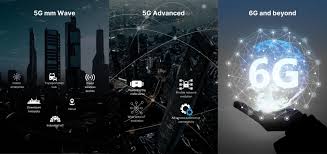
Just as 5G is transforming connectivity with faster speeds and lower latency, scientists and engineers are already looking ahead to 6G, the next generation of wireless networks. Promising ultra-high-speed, ultra-reliable, and intelligent connectivity, 6G could redefine the way we live, work, and interact with technology.
1. What 6G Will Bring
While 5G enables smart cities, autonomous vehicles, and enhanced mobile broadband, 6G aims to go even further:
- Speeds up to 100 times faster than 5G: Download movies in seconds and support massive data streams.
- Near-zero latency: Essential for real-time applications like holographic communications and remote surgery.
- AI-powered networks: Intelligent systems optimize traffic, predict failures, and manage connectivity efficiently.
- Integration with space networks: 6G could connect terrestrial and satellite networks for global coverage.
2. Applications of 6G Technology
- Holographic communications: 3D video calls and immersive telepresence experiences.
- Autonomous transportation: Faster, more reliable communication for self-driving cars and drones.
- Smart cities: Real-time data analytics for traffic, energy, and environmental management.
- Healthcare: Remote surgery and continuous patient monitoring with minimal delays.
- Industrial automation: Ultra-fast, reliable control for factories and robotics.
3. How 6G Differs from 5G
- Frequency spectrum: 6G will use higher frequency bands, including terahertz waves, for faster data transfer.
- Intelligence: Unlike 5G, 6G networks will integrate AI for autonomous network management.
- Global coverage: Satellite integration will enable connectivity in remote and underserved regions.
- Energy efficiency: Designed to support massive device networks while minimizing power consumption.
4. Challenges Ahead
- Infrastructure costs: Building 6G networks will require significant investment in antennas, satellites, and data centers.
- Regulatory hurdles: Spectrum allocation and global standards need to be established.
- Health and environmental concerns: High-frequency waves require careful safety and sustainability evaluation.
- Technological hurdles: Achieving reliable, ultra-fast, and low-latency communication at a global scale is complex.
5. The Future of Connectivity
6G is expected to be commercially available around 2030, ushering in a new era of immersive experiences, intelligent networks, and global connectivity. It promises not just faster internet but smarter, more integrated communication systems that blend AI, IoT, and advanced wireless technologies.
Final Thoughts
The transition from 5G to 6G is not just a speed upgrade—it’s a technological leap that could transform every aspect of human life, from healthcare and education to transportation and entertainment. 6G will redefine what it means to be connected in a hyper-digital world.